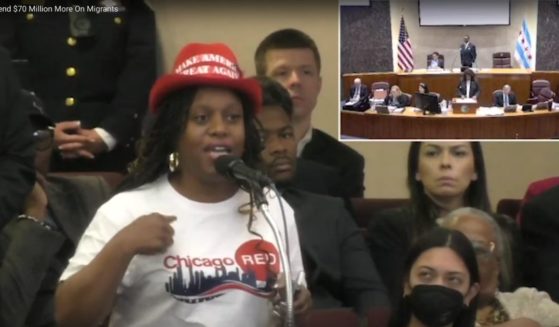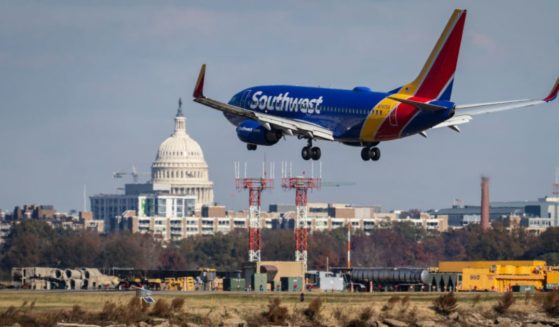Gov't Watchdog Group Exposes $3.1 Trillion in Potential Federal Budget Savings
The U.S. government spends a lot of money it doesn’t need to, according to Citizens Against Government Waste, and it’s occurring at a time when the federal debt continues to rise even as the economy expands and tax revenues increase.
In its Prime Cuts 2018 study, CAGW identifies $3.1 trillion in potential federal budget savings over five years, $429.8 billion of which the nonprofit organization says could be realized in the first year of being enacted.
CAGW’s latest study includes 636 recommendations with cuts across the entire federal government. The recommended expense cuts come from bipartisan and nonpartisan sources, such as the Government Accountability Office, Congressional Budget Office, President Donald Trump’s fiscal year 2019 budget and former President Barack Obama’s “Cuts, Consolidations, and Savings” budget recommendations report.
Among them are calls to eliminate programs that have outrun their original terms and budgets, CAGW says, including the U.S. Air Force’s F-135 fighter jet development program, subsidies that amount to corporate welfare such as for the sugar and dairy farmer industries, and those that the federal government simply cannot afford, or would be better off leaving to private enterprise, such as the National Endowment for the Arts.
The single, largest source of savings would come from dramatically reducing improper payments across government departments and agencies, according to CAGW. Reducing improper Medicare payments by 50 percent alone would save U.S. taxpayers $18.1 billion over five years, CAGW Communications Director Curtis Kalin told watchdog.org.
“Improper payments across the government is an incredibly important story that doesn’t get as much coverage as it should,” Kalin said.
Improper payments by federal government departments and agencies can result from simple clerical errors, such as inputting an incorrect dollar amount, or they may result from more serious, potentially criminal, activities — over-billing or fraud on the part of federal government contractors, for example.
The problem is a huge one — improper payments amount to something on the order of $130 billion to $140 billion per year across the federal government. The federal government tracks and publicly discloses improper payments, and reduction targets, on the Payment Accuracy website. Improper payment rates for fiscal 2017 varied widely — up to 100 percent for the Veterans Affairs’ Purchased Long Term Services and Support program.
“Every dollar (of improper payments) that goes out the door in the name of taking care of people doesn’t wind up taking care of people,” Kalin said. “The same thing is true with certain longstanding federal programs, such as the Department of Defense’s F-35 program. And it’s not just that taxpayers are getting ripped off — improper payments and wasteful spending undermine the fundamental reason and motivation for apportioning the funds in the first place.
“The problem is that they (improper payments) are not discovered until the money is already out the door. There are very few mechanisms to be found anywhere in the federal government that verify and validate apportioned funds before they are actually paid out.”
Discovery of improper federal payments, if the discovery happens at all, is made during back-end accounting processes and audits, Kalin added.
“Then we find out that we lost this much money,” he said. “It’s a longstanding problem, but knowledge of it has not translated into any response to make changes.”
Improper payments by the federal government average about 10 percent of each department’s budget but can run as high as 20 percent in some departments or agencies, Kalin said. That’s significantly higher than fraudulent payment rates among major credit card companies such as MasterCard or Visa, which typically come in at a fraction of 1 percent.
“The difference is that Visa or MasterCard can shut down your card,” Kalin said. “Either by law or custom, that doesn’t happen in the federal government, which has opted for measurement after the fact.”
The fiscal 2019 federal budget is a little more than $4 trillion, nearly 23 percent of 2017’s national GDP. Estimated federal tax revenues total $3.422 trillion, leaving the government with a deficit of $985 billion. The shortfall will have to be made up, either by increasing the national debt, which stands at some $21 trillion, or as yet unplanned spending cuts.
Of the three broad categories of federal government spending, mandatory spending, such as that for Social Security ($1.046 trillion), Medicare ($625 billion) and Medicaid ($412 billion), accounts for 62 percent of 2019’s total expenditure. Nearly all the remaining 38 percent goes to the wide range of programs and activities carried out by federal government departments and agencies.
More than half the federal government’s discretionary spending — a total of $1.203 trillion for fiscal 2019 — has been allocated to the military and other defense-related departments. The remainder will be used to fund all other federal government departments, the largest of which are Health and Human Services, Education, and Housing and Urban Development.
“As the U.S. budget hurdles toward trillion-dollar deficits and with the national debt exceeding $21 trillion, Prime Cuts 2018 is needed now, more than ever,” CAGW President Tom Schatz said. “The only way to put our country on a path toward fiscal sanity is for leaders to make bold decisions to reduce waste, fraud, abuse, and mismanagement; and Prime Cuts 2018 is an invaluable resource for them to achieve that objective.”
Americans for Prosperity Senior Policy Fellow Alison Winters found that the recommendations set out in CAGW’s Prime Cuts 2018 align very well with AFP’s broad-based mission of reining in federal spending and reducing the size of the federal budget and debt to the point where they are financially sustainable and socioeconomically responsible.
“The report cuts a wide swath and makes recommendations across the board, many of which are similar, if not identical, to our own,” Winters told Watchdog.org. “Federal spending is out of control and we have big concerns here about that.”
Among the recommendations AFP as well as CAGW make are eliminating the U.S. Export-Import Bank and the Overseas Private Investment Corp. government agencies that promote and subsidize overseas investments by U.S. corporations. These programs essentially amount to corporate welfare, according to Winters.
“Ironically, the Senate just passed the House version of the FAA Reauthorization Act that for some reason includes a provision that will roll OPIC into a new, larger entity with a larger budget — the U.S. International Development Finance Corp.,” Winters said. “The provision doubles OPIC’s lending authority — corporate welfare that costs taxpayers and exposes them to risk.”
Similarly, AFP and other federal budget watchdogs have been urging federal government leaders to significantly reduce, if not eliminate, improper and wasteful spending within Medicare, Medicaid and Social Security.
“These are sound proposals that are essential and necessary in order for the federal government to balance the budget and demonstrate fiscal responsibility,” Winters said.
A version of this article previously appeared on Watchdog.org under the headline “Government watchdog group IDs $3.1 trillion in potential federal budget savings.”
Truth and Accuracy
We are committed to truth and accuracy in all of our journalism. Read our editorial standards.











